The Heritage Garden at the North Carolina Arboretum in Asheville features plants associated with Southern Appalachian crafts such as natural dyes, hand papermaking, broom making, basket making and botanical remedies. An informational board showcases naturally dyed yarns in a surprising array of colors and identifies which plants were used to create the dyes. Small signs (like this one for the Rose of Sharon) identify specific plants and their usage throughout the garden. I became intrigued by the idea of natural dyeing after seeing this exhibit.
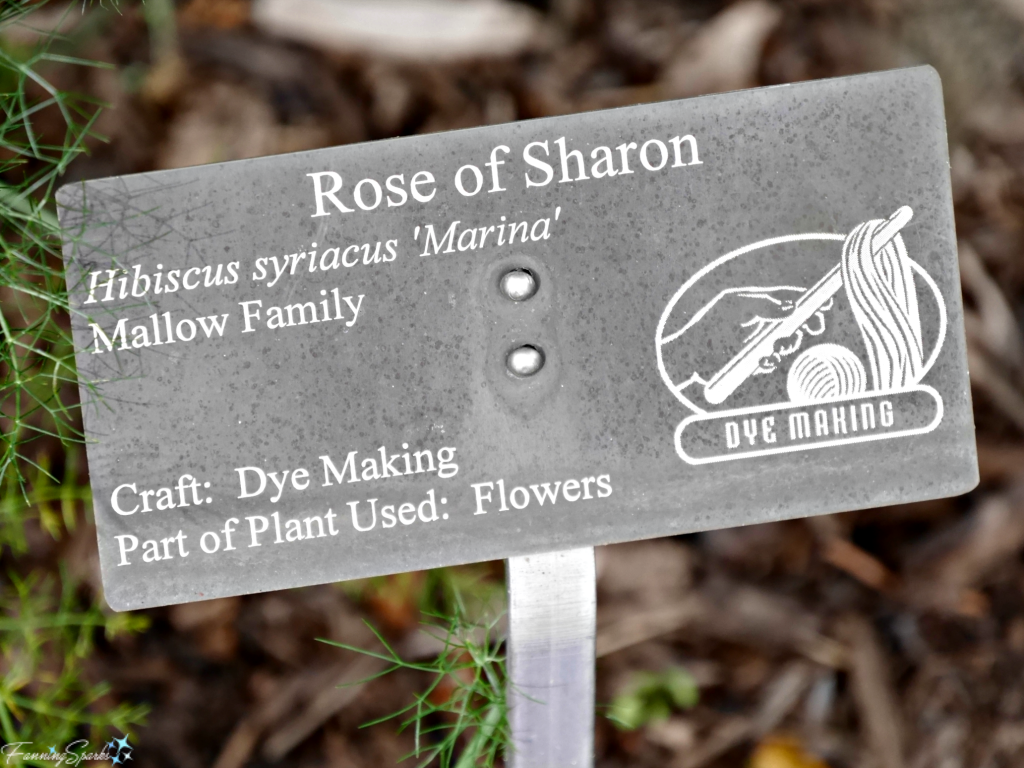
Fast forward to a year later, I had the opportunity to attend a Natural Dyes workshop at the Robert C. Williams Museum of Papermaking in Atlanta. The workshop was led by Doug Baulos and Jacob Phillips. It was an information-packed, fun-filled day of making.
First we made an eco-print placing eucalyptus leaves, red cabbage and steel wool on a vinegar-spritzed sheet of paper. The paper was tightly rolled, tied with fabric strips, and then cooked and steamed for several hours in a concoction of coffee, tea, vinegar and other liquids. The results were a wonderful surprise!

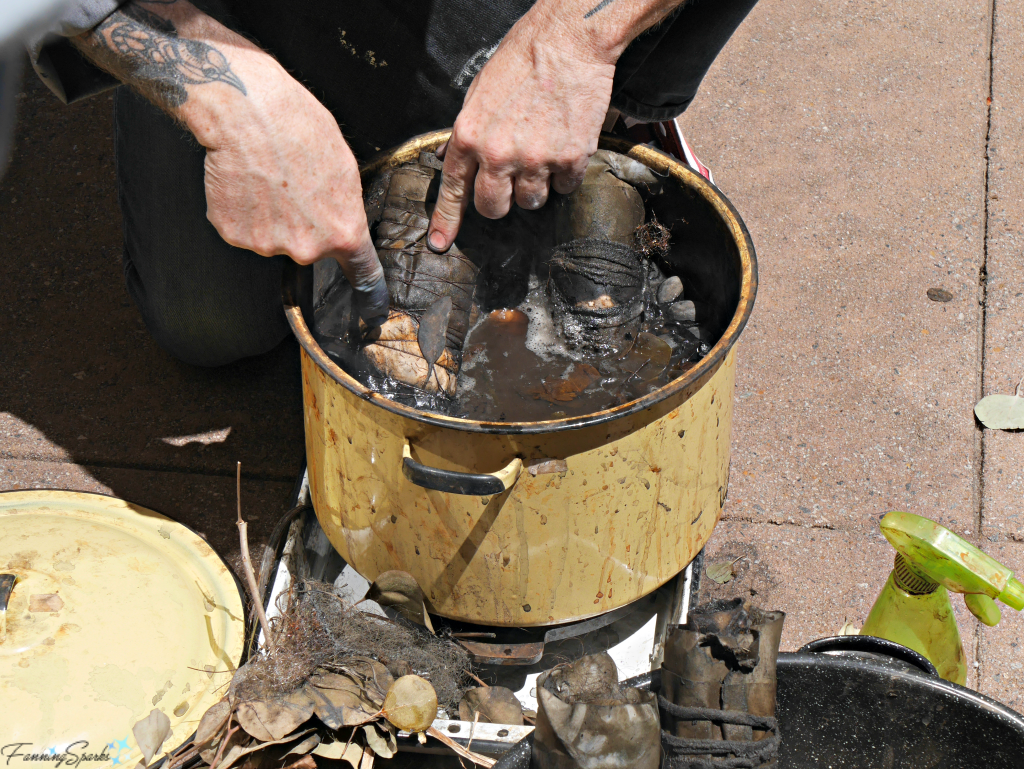
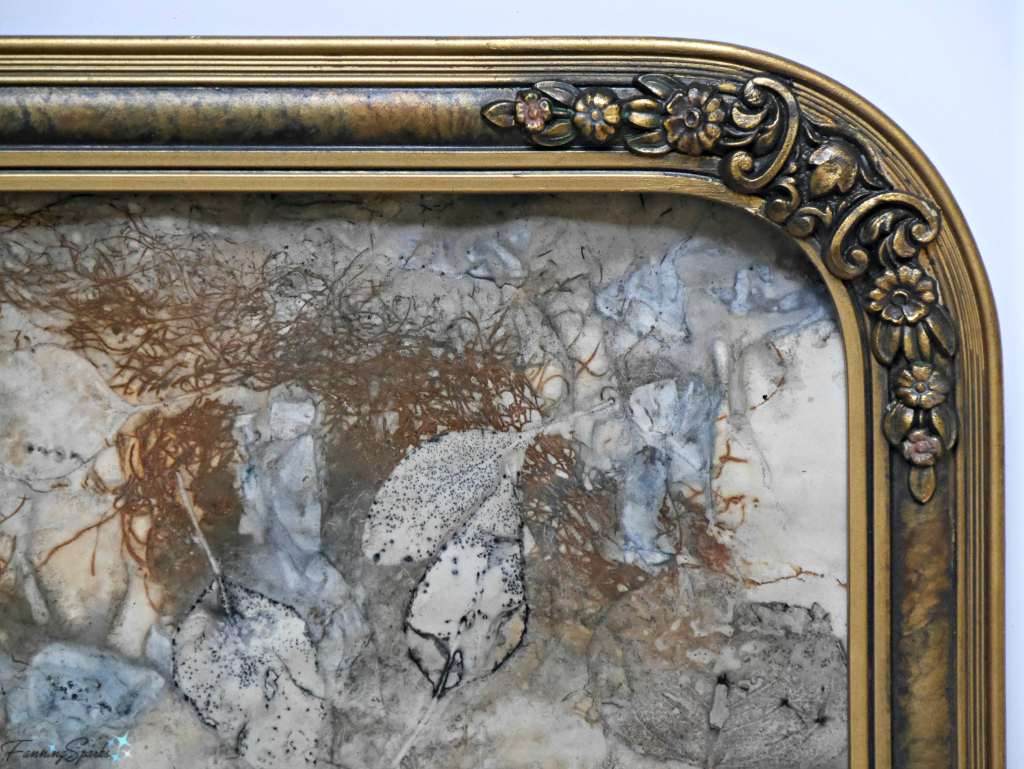
In our second project, we learned about Suminagashi which is the ancient art of Japanese marbling. We used natural dyes made from cutch, pokeweed, hopi and lily/buckthorn/iron. The best part was playing with the floating dyes to achieve a striking design. Next, we moved on to the Venetian Fold. Using rice paper, we learned how to complete a Venetian fold. We dipped our folded paper into 3 different dyes (buckthorn (alembic), alkanet and madder) to achieve a lovely ombre effect.
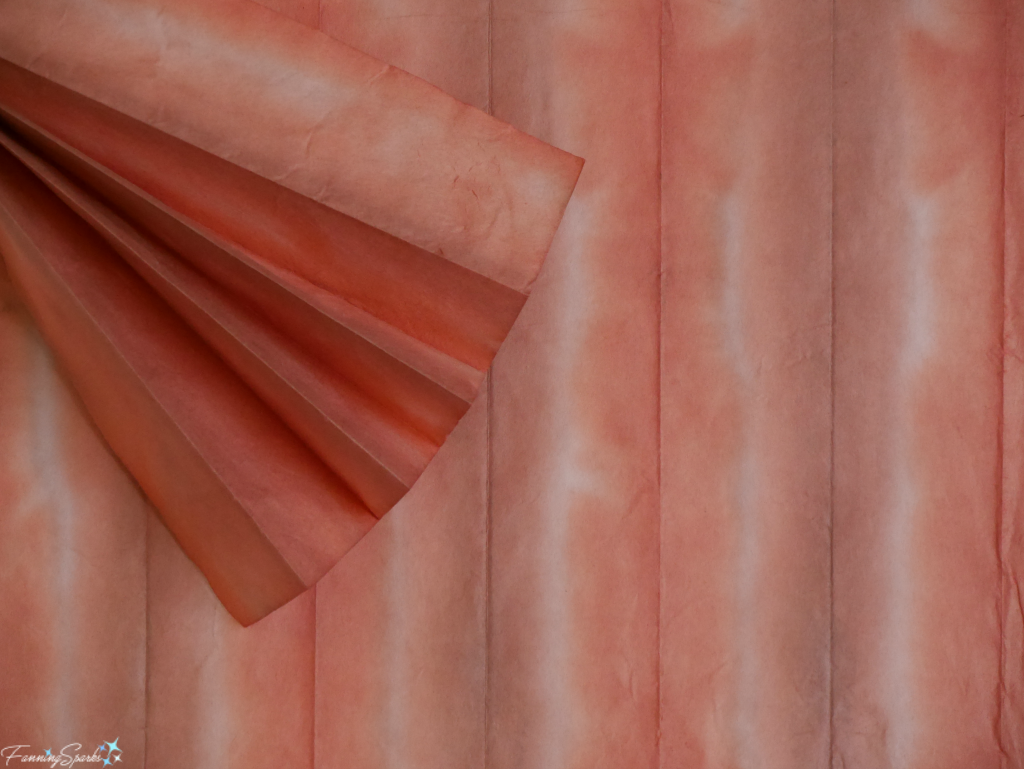
All of this was great fun but the last topic, Itajime, was the most popular. Itajime is a Shibori technique where you fold to create negative spaces in the dyed fabric. We learned about vat dyeing and the proper way to develop and handle an indigo dye vat. Then we all had great fun folding papers and fabrics in a variety of innovative ways. We used clamps, wooden blocks, string and rubber bands to hold the folds in place and create interesting patterns. Then we dipped our little bundles into the indigo vat to let the dye take over. After carefully unfolding our dyed items they were hung to dry. Here you can see some of the amazing work created by my talented classmates.
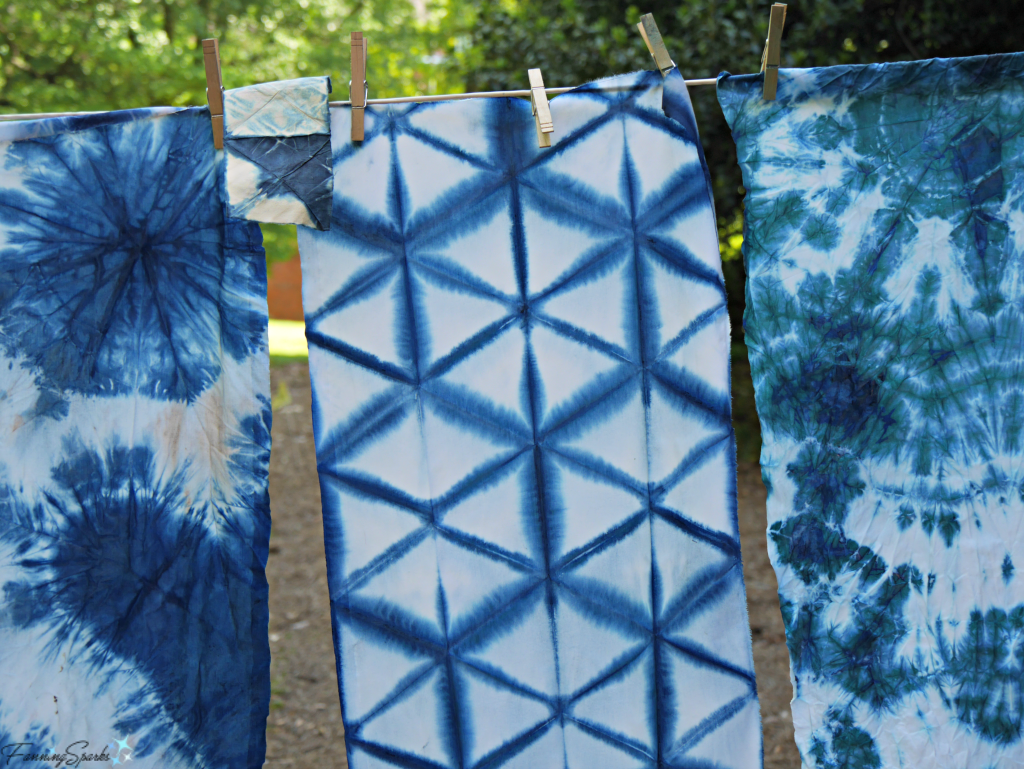
The whole process was magical! It’s little wonder natural dyeing has become so popular. Ironically the age-old practice of using dye derived from plants and animals was phased out in the mid-1800s when synthetic dyes were introduced. Yet, as we see with so many traditional arts and crafts, interest in natural dyeing has surged and it’s back in vogue.
I’ve always loved the beautiful deep purple-blue flowers of the Baptisia australis (aka Blue False Indigo) but I never realized I could use it to dye fabrics and papers naturally. Here are a couple of shots of my itajime projects staged in front of the Baptisia australis when it was in full bloom in my flower garden. Isn’t it cool to see the indigo-dyed paper and fabric with an actual indigo plant?
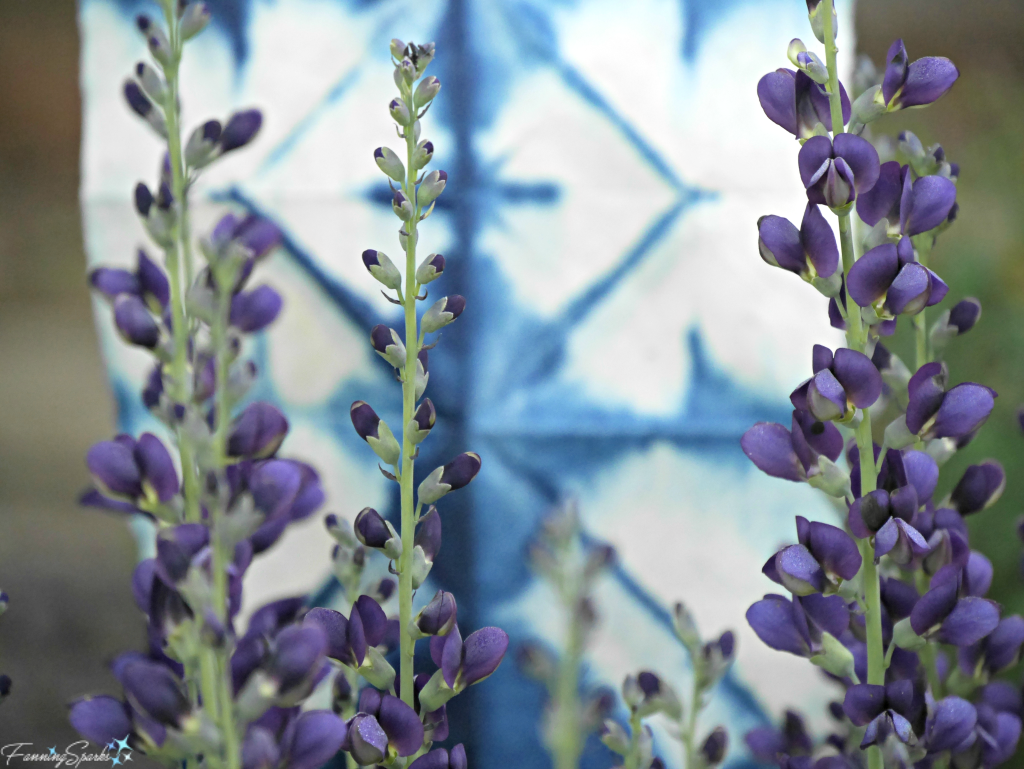
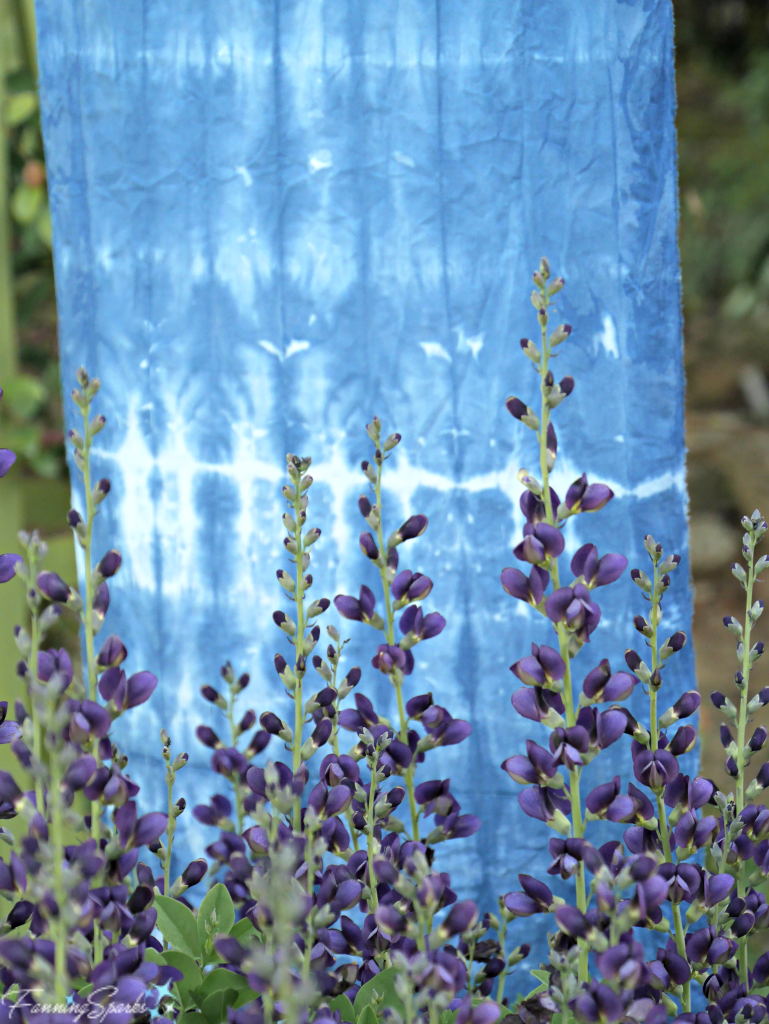
Warning: Using natural dyes does require an informed and mindful approach. Poisonous plants can easily be mistaken for the intended varieties. Harmful materials can be used incorrectly. Research and safety are critical! It’s also important to be mindful of your sources. In the southern US, for instance, the demand for natural dye making has increased the illegal harvesting of plants from protected areas and is causing environmental concerns due to over-collection. Let’s not contribute to this problem.
More Info
You can learn more about the Heritage Garden at the North Carolina Arboretum on their website under Plan a Visit > Garden Exhibits.
Workshops and exhibits at the Robert C. Williams Museum of Papermaking are posted on their website. They also have an active Facebook page.
Both of the Natural Dyes workshop instructors, Doug Baulos and Jacob Phillips, are active on Instagram. Be sure to check them out.
Michel Garcia, from Lauris France, is considered to have played a pivotal role in building an understanding of natural dye history and teaching sustainable adaptations for current practice. He established Le Jardin Conservatoire des Plantes Tinctoriales (Botanical Garden of Dye Plants) as a horticultural resource for chemists, natural dye researchers, and botanists.
I’ve started a Pinterest board on Natural Dyes with lots of info about making and using natural dyes.
Today’s Takeaways
Here are a few thoughts to take away from today’s post.
- Sometimes the materials you need to make something innovative and new can be found in your own backyard.
- There’s a fascinating connection between gardening and traditional arts and crafts.
- Natural dyes have a long history that opens up a world of possibilities.





Comments are closed.